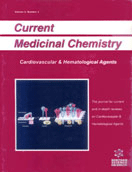Abstract
A novel human plasma protein was found in the eluate from the dextran sulfate column, which was used for the treatment of the patients with hypercholesteremia to reduce plasma low density lipoprotein. The results of sequence analysis revealed that this protein was a homologue of heavy chains of inter-alpha-trypsin inhibitor (ITI) family, and it was termed IHRP (ITI family heavy chain related protein). IHRP was identified as an acute-phase protein in animals, and slightly increased concentrations in human plasmas were observed in the patients with inflammatory disorders. IHRP bound to actin and inhibited its polymerization, and IHRP suppressed the phagocytosis and chemotaxis of polymorphonuclear cells. These results suggest that IHRP may function as an anti-inflammatory protein. Plasma hyaluronan binding protein (PHBP) is a novel serine protease which was also found in human plasma. It is consisted of three epidermal growth factor domains, one kringle domain and one serine protease domain from its amino terminus. The amino acid sequence of PHBP is homologous to that of hepatocyte growth factor activator. Purified 75-kDa single chain pro-form of PHBP was auto-activated (auto-cleaved) to 50-kDa heavy chain and 25-kDa light chain, both of them are bridged by a disulfied bond. PHBP digested α-chain and β-chain of fibrinogen to prevent coagulation and cleaved single chain urokinase type plasminogen activator (scuPA) to the active hetero dimer form (tcuPA). The auto-activation of PHBP was accelerated in the presence of dextran sulfate or phosphatidylethanolamine as well as factor XII of the coagulation system. C1 inhibitor of the complement system was identified as the main inhibitor of PHBP in human plasma. Partial hepatectomy and administration of carbon tetrachloride or galactosamine caused the conversion of pro- PHBP to the active form in mouse but administrations of turpentine and mercury chloride did not, suggesting the hepatic injury specific activation of PHBP. These results indicate that PHBP participates not only in the fibrinolytic system but also in the degradation cascade of extracellular matrix (ECM), i. e., PHBP activates scuPA to tcuPA, tcuPA activates matrix metalloproteases (MMPs) and activated MMPs degrade ECM for the tissue remodeling after hepatic injury.
Keywords: ihrp, inflammation, acute-phase protein, phbp, serine protease, extracellular matrix, urokinase type plasminogen activator, hepatic injury
 2
2













